The Musical Combinations
Every country in the world has its own culture that includes literature, arts, painting, music and other important elements. Indian musical culture and heritage are rooted back to hundreds of years with legendary tales of classical musicians like Tansen, Baiju Bawra in the North Indian/ Hindustani musical tradition and Purandara Dasa, Thyagaraja, etc in the South Indian/ Carnatic musical tradition who laid the basis for classical Indian music. At the same time, folk music and theatre have also been a part of Indian culture across languages which resulted in the combination of dance and drama… These dance-dramas usually confessed local tales or the stories from the Ramayana; the tale of Ram Leela is one example that is seen to be continuing albeit at its fading popularity.
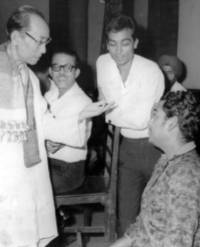 With the arrival of recorded music in the early 20th century, what was once an oral tradition could now be appreciated and acknowledged across various socio-economic classes. The early talkie films were usually tales from our classics the first-ever film made in India – a silent one – was Raja Harishchandra. Recorded music and talking films in the 1930s ensured that the masses in India could now see and hear their folk legends in their language, leading to the proliferation of recorded music and setting the standards of an excellent fusion of the popular and the classical. This also stemmed in certain combinations of musicians, singers, and artists being more successful in the public eye than the others. Thus, were born the idea of Musical Combos – a certain combination of either a filmmaker and singer and or musician.
With the arrival of recorded music in the early 20th century, what was once an oral tradition could now be appreciated and acknowledged across various socio-economic classes. The early talkie films were usually tales from our classics the first-ever film made in India – a silent one – was Raja Harishchandra. Recorded music and talking films in the 1930s ensured that the masses in India could now see and hear their folk legends in their language, leading to the proliferation of recorded music and setting the standards of an excellent fusion of the popular and the classical. This also stemmed in certain combinations of musicians, singers, and artists being more successful in the public eye than the others. Thus, were born the idea of Musical Combos – a certain combination of either a filmmaker and singer and or musician.
The earliest such combos are that of two giants of the early recorded years in Hindustani Film Music – K.L. Saigal and Pankaj Mullick. Both sang songs in Hindustani – a mix of Hindi and Urdu that has always been given the label of Hindi Film Music. Both Saigal and Mullick were groomed by B.N.Sircar, the chief of New Theatres whose music director R.C.Boral brought out the best in them. This was a pre-independence combo and perhaps unconsciously it was set in the minds of filmmakers that a musical combo was essential for the success of a film. Saigal was at that time THE voice of India and he recorded many songs in Bengali also as he was based in Calcutta in his stint with New Theatres.
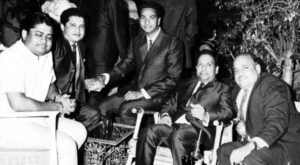 Early imitators of the legendary Saigal included the first generation of post-independence singers such as Mohammed Rafi, Mukesh, Kishore Kumar, Talat Mehmood who with sheer hard work and talent shook off the label of being Saigal clones and formed their unique styles of singing. The first generation of female singers such as Lata Mangeshkar, Asha Bhosale, Geeta Dutt, etc. also formed their styles. Both the male and female singers became the singing voices of three generations of film stars and in the case of Lata Mangeshkar almost five generations for female stars. All of them formed excellent working and even personal rapport with generations of music directors, lyricists, film stars. So much was the craze that a combo was a guarantee of a ‘hit’ for the producer who was, of course, looking only on return on his investment. The golden period of film music is often considered to be the years from 1947 – 1970 but this topic is always up for debates. Here’s why, For someone born in the late 1950s or 1960s, the golden period obviously would remain his/ her teen years which would have been the 1970s. Similarly, someone born in the 1970s would say the golden period was the late 1980s and early 1990s. Rather than keep any such cut-offs, we will look at a much broader aspect of such musical combos across the years that doesn’t have any label such as Golden, etc. But relevant to the sheer artistic talent that has resulted in gems of music time and again.
Early imitators of the legendary Saigal included the first generation of post-independence singers such as Mohammed Rafi, Mukesh, Kishore Kumar, Talat Mehmood who with sheer hard work and talent shook off the label of being Saigal clones and formed their unique styles of singing. The first generation of female singers such as Lata Mangeshkar, Asha Bhosale, Geeta Dutt, etc. also formed their styles. Both the male and female singers became the singing voices of three generations of film stars and in the case of Lata Mangeshkar almost five generations for female stars. All of them formed excellent working and even personal rapport with generations of music directors, lyricists, film stars. So much was the craze that a combo was a guarantee of a ‘hit’ for the producer who was, of course, looking only on return on his investment. The golden period of film music is often considered to be the years from 1947 – 1970 but this topic is always up for debates. Here’s why, For someone born in the late 1950s or 1960s, the golden period obviously would remain his/ her teen years which would have been the 1970s. Similarly, someone born in the 1970s would say the golden period was the late 1980s and early 1990s. Rather than keep any such cut-offs, we will look at a much broader aspect of such musical combos across the years that doesn’t have any label such as Golden, etc. But relevant to the sheer artistic talent that has resulted in gems of music time and again.
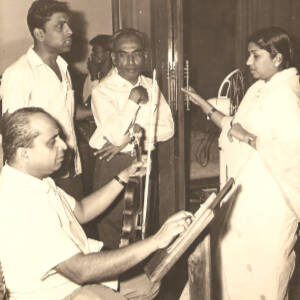 The series will also include filmmakers who integrated music into their story so well that the music never came as an interruption (the infamous cigarette or bathroom break song as they were derisively known as) but forwarded the story. Few were the filmmakers who had an innate sense or even knowledge of music but those who did create eternal gems for our enjoyment. In very few cases like Raj Kapoor and Dev Anand who were stars, producers and directors, the music in some of their home productions became all-time classics.
The series will also include filmmakers who integrated music into their story so well that the music never came as an interruption (the infamous cigarette or bathroom break song as they were derisively known as) but forwarded the story. Few were the filmmakers who had an innate sense or even knowledge of music but those who did create eternal gems for our enjoyment. In very few cases like Raj Kapoor and Dev Anand who were stars, producers and directors, the music in some of their home productions became all-time classics.
This series Musical Combos pays tribute to these legendary music makers or wizards and shares these gems with you for you to enjoy and reminisce.


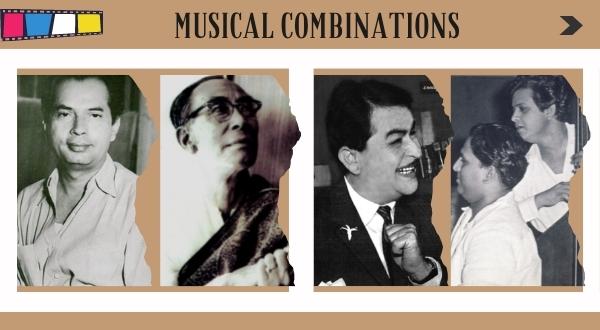
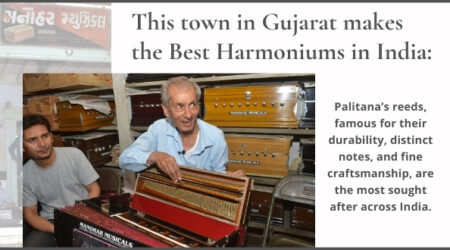
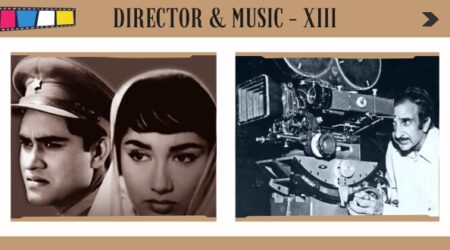

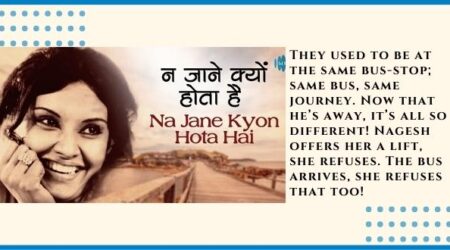
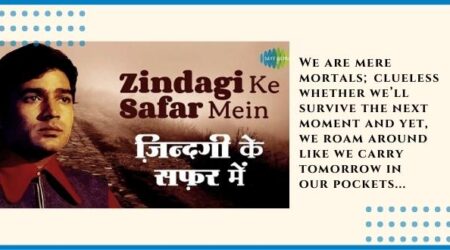
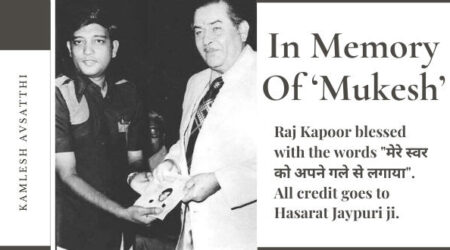
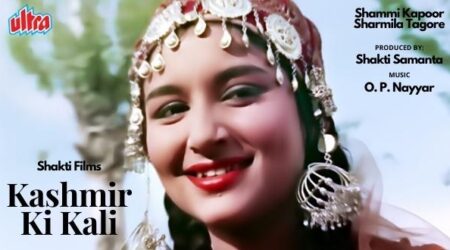
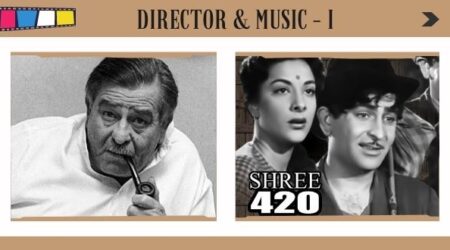
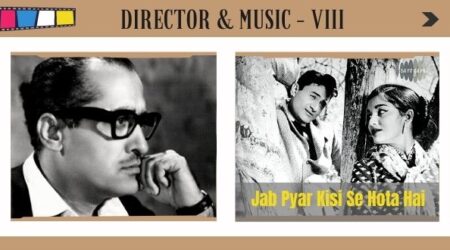
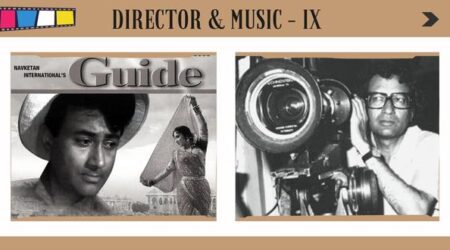

Leave a Reply